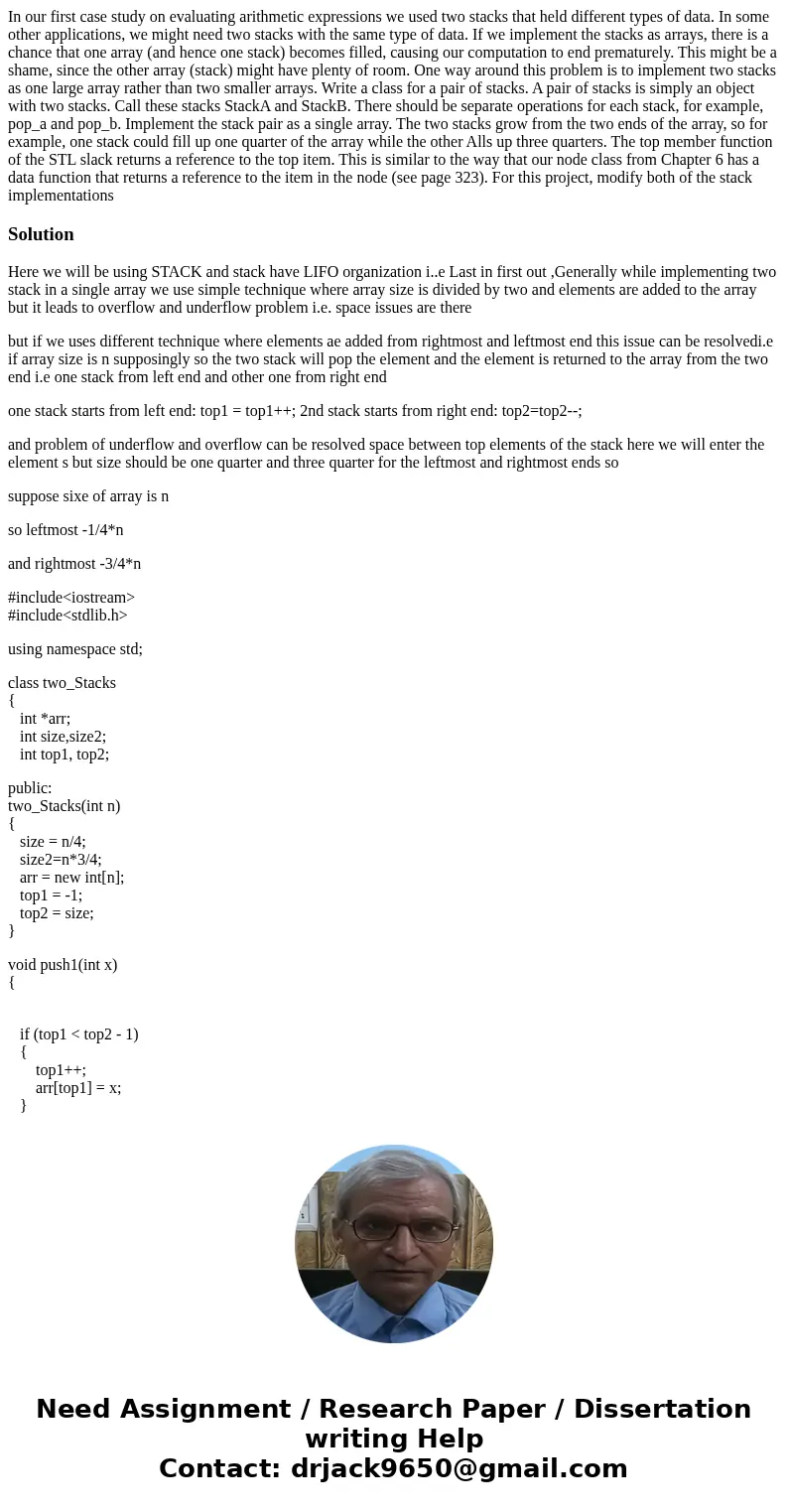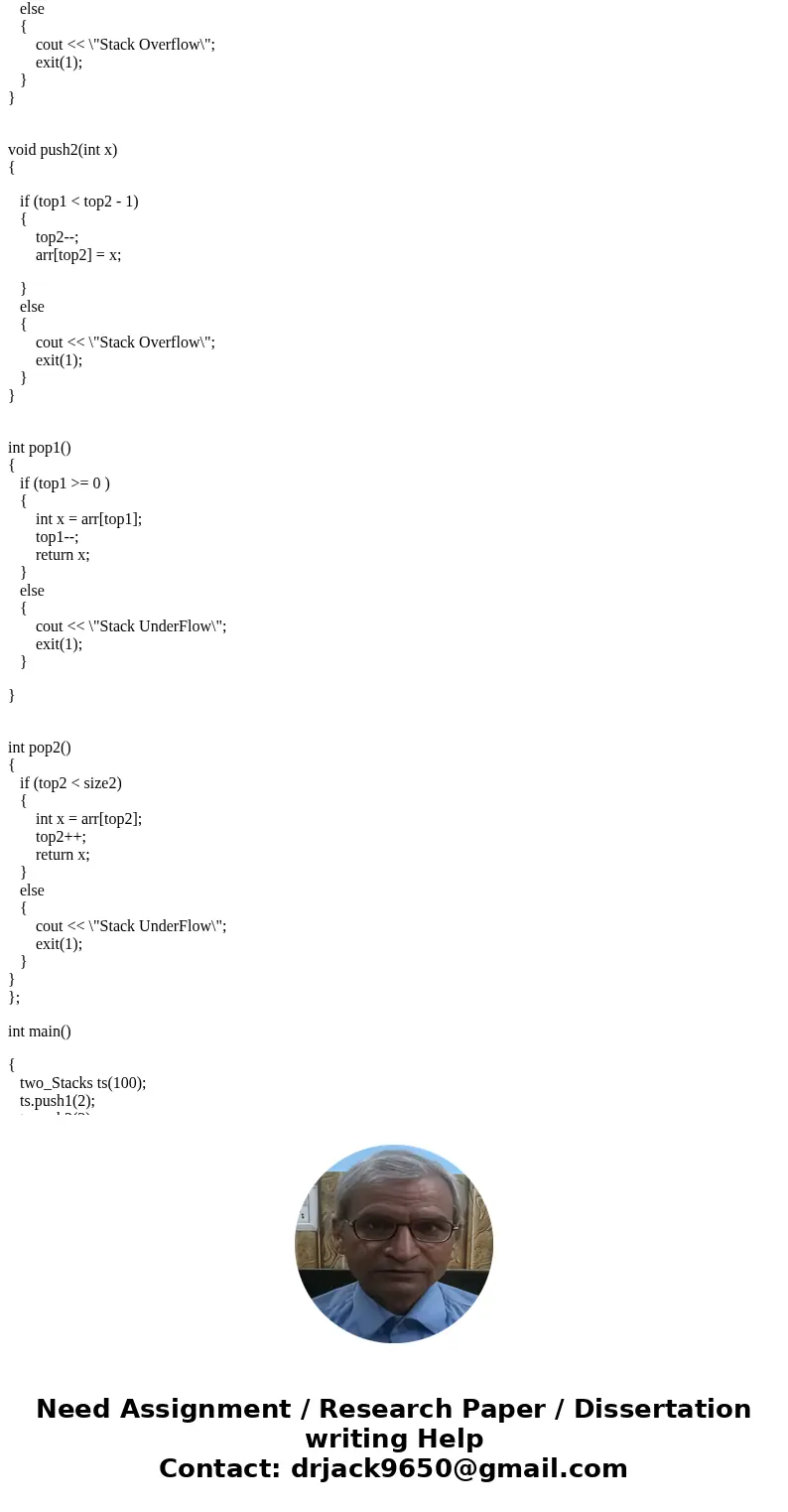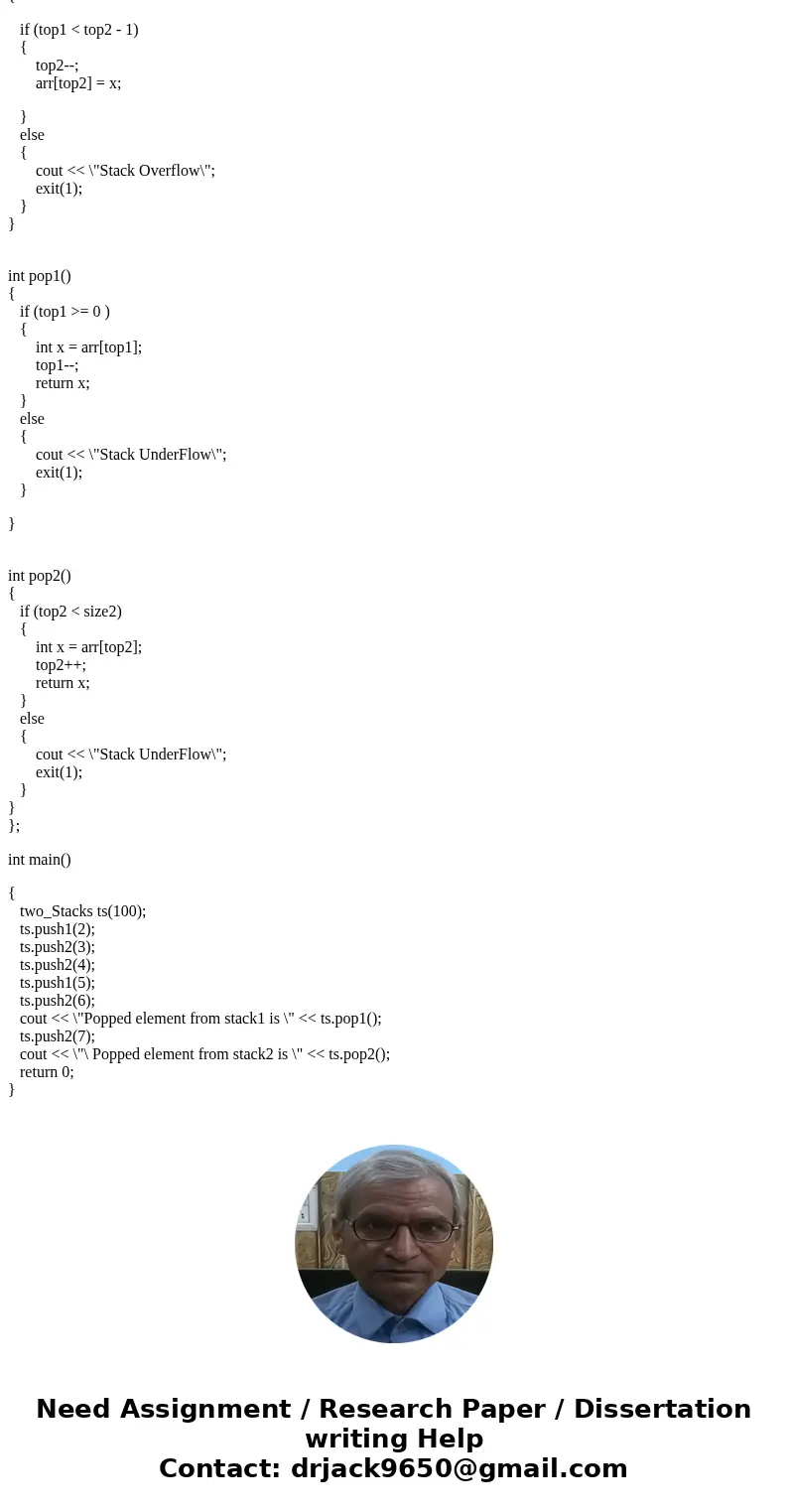In our first case study on evaluating arithmetic expressions
Solution
Here we will be using STACK and stack have LIFO organization i..e Last in first out ,Generally while implementing two stack in a single array we use simple technique where array size is divided by two and elements are added to the array but it leads to overflow and underflow problem i.e. space issues are there
but if we uses different technique where elements ae added from rightmost and leftmost end this issue can be resolvedi.e if array size is n supposingly so the two stack will pop the element and the element is returned to the array from the two end i.e one stack from left end and other one from right end
one stack starts from left end: top1 = top1++; 2nd stack starts from right end: top2=top2--;
and problem of underflow and overflow can be resolved space between top elements of the stack here we will enter the element s but size should be one quarter and three quarter for the leftmost and rightmost ends so
suppose sixe of array is n
so leftmost -1/4*n
and rightmost -3/4*n
#include<iostream>
#include<stdlib.h>
using namespace std;
class two_Stacks
{
int *arr;
int size,size2;
int top1, top2;
public:
two_Stacks(int n)
{
size = n/4;
size2=n*3/4;
arr = new int[n];
top1 = -1;
top2 = size;
}
void push1(int x)
{
if (top1 < top2 - 1)
{
top1++;
arr[top1] = x;
}
else
{
cout << \"Stack Overflow\";
exit(1);
}
}
void push2(int x)
{
if (top1 < top2 - 1)
{
top2--;
arr[top2] = x;
}
else
{
cout << \"Stack Overflow\";
exit(1);
}
}
int pop1()
{
if (top1 >= 0 )
{
int x = arr[top1];
top1--;
return x;
}
else
{
cout << \"Stack UnderFlow\";
exit(1);
}
}
int pop2()
{
if (top2 < size2)
{
int x = arr[top2];
top2++;
return x;
}
else
{
cout << \"Stack UnderFlow\";
exit(1);
}
}
};
int main()
{
two_Stacks ts(100);
ts.push1(2);
ts.push2(3);
ts.push2(4);
ts.push1(5);
ts.push2(6);
cout << \"Popped element from stack1 is \" << ts.pop1();
ts.push2(7);
cout << \"\ Popped element from stack2 is \" << ts.pop2();
return 0;
}



 Homework Sourse
Homework Sourse